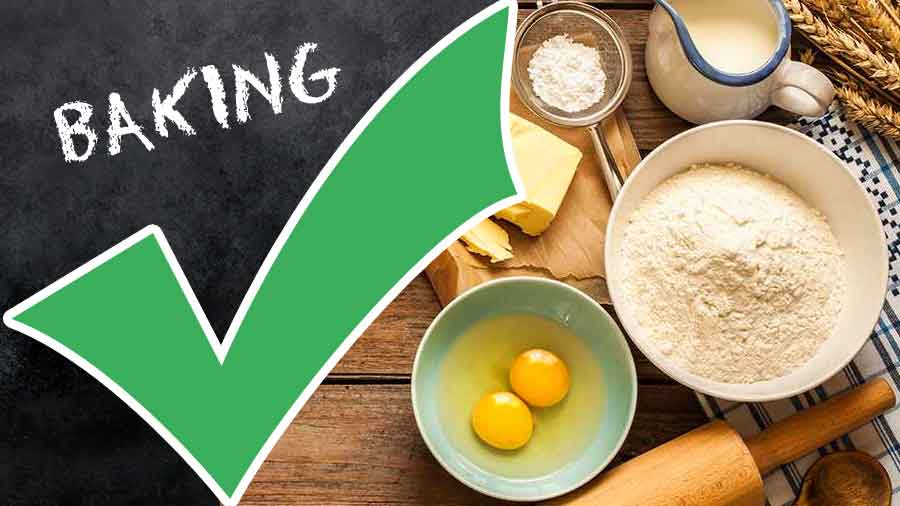Sifting

Sift flours and lumpy sugars to incorporate air into them and to remove lumps that may not break down when mixing.
Flours
Flours come in a wide variety, including white, wholemeal and self-raising. Wholemeal flour gives finished products a heavier texture and wheatier flavour. Self-raising flour is plain flour with baking powder added.
Whisking

Whisking can be done with a hand wire whisk or with an electric whisk attachment on electric mixers. Whisking breaks up ingredients so they combine. It also aerates ingredients such as eggs.
Folding
When folding, use a metal spoon to cut through ingredients and fold them over each other, being careful not to stir the air out of the mixture.
Creaming

When creaming butter and sugar, the butter should be cold but softened slightly. Melted or partially melted butter will change the texture and rising of the end result. Cream butter and sugar until they become a pale creamy colour and the mixture looks light and aerated. It’s possible to over cream the mixture, so don’t over beat!
Beating
Beating can be done by hand with a wooden spoon or with an electric mixer, depending on instructions in the recipe. Beating ingredients will combine and aerate them. When beating, run a plastic or rubber scraper down the sides of the bowl so ingredients are well combined. Using a food processor to beat will not aerate the ingredients; it will just make them smooth. When beating egg whites, make sure the bowl and beaters are clean and dry for maximum volume. When beating cream, make sure the cream is well chilled. If it is a hot day, chill the bowl and beaters as well.
Butters
Butters can be salted and unsalted. When baking with delicate flavours, unsalted butter is better. For nutty- tasting butter for friands, melt butter over low heat, remove from heat before it is all melted and stir. For some savoury sauces, heat the butter and allow it to slowly simmer until it has turned a light golden colour. When creaming butter, remove it from the refrigerator a few hours beforehand and use at room temperature. When making pastry, butter must be cold and firm to ensure the pastry has a fine, crisp crumb.

